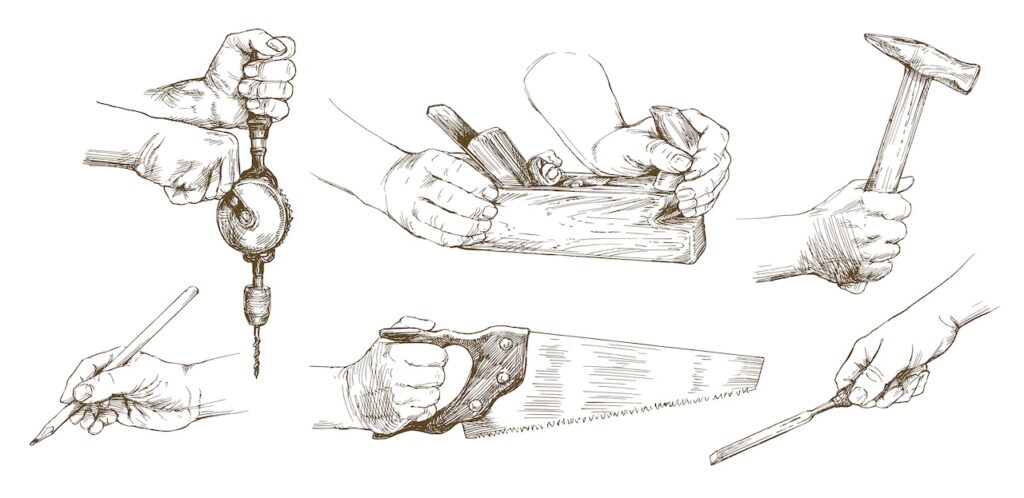Even though all of the Church’s saints are important and might be significant in terms of individual and communal devotion, some saints, like Saints Patrick and Joseph, loom large. I have always been struck by how their days – a memorial for St. Patrick and a solemnity for St. Joseph – are nearly back-to-back in the liturgical calendar.
In our secularized American culture, St. Patrick’s Day tends to be treated somewhat the same as St. Valentine’s Day in the popular imagination. While a religious day, St. Patrick’s Day is also a secular holiday because of the culture and the impact of the Irish in the United States. It is evident in the parades and other celebrations sponsored by groups such as the Ancient Order of Hibernians and the Friendly Sons of St. Patrick, and even the Knights of Columbus.
Beyond my first name, there is very little Irish in me. Rather, I am predominantly a mix of Lithuanian, German and Italian. Our Italian heritage was highlighted on St. Joseph’s Day as that was always the day my mother started planting her garden each year.
In some ways, given the juxtaposition of the two saints’ days, it might appear that they are competing. Other than in the Church, St. Joseph seems to get less attention than St. Patrick in the American culture. But it’s not a competition. Instead, we should see each feast as complementary to the other.
I look at both saints as builders. According to tradition, St. Patrick introduced the concept of arches to Irish builders. Prior to that, when churches were built, corbels were used to support weight throughout the structure. By incorporating arches, architects could design sophisticated structures replete with more open space. As a result of his impact upon church architecture, the Church named St. Patrick the patron saint of engineers.
St. Joseph was a carpenter. He demonstrated for us the dignity of labor and craftsmanship as he supported the Holy Family. In addition to being the patron saint of the universal Church, he is the patron of carpenters and workers.
St. Patrick’s preaching the Gospel and converting the Irish went far beyond Ireland’s borders. The seeds of faith he planted resulted in the establishment of religious communities over multiple centuries. Priests, as well as men and women religious from those congregations often became missionaries to Asia, Africa and the United States.
St. Joseph is protector of the Church – the one who safeguards the tabernacle and Eucharist of God’s presence with us. As the protector, he provided care and shelter for his Holy Family against the threats they encountered, and he continues to guard individuals and families who are vulnerable and in need of protection.
Commemoration of the two saints’ days so close to Holy Week reminds us that since Ash Wednesday, we’ve been laboring to fortify our spiritual lives. We’ve been trying to put bricks and mortar in place so that our lives will be a stable structure for the life of the Spirit. That’s the hard work of Lent.
When we finish constructing something, there is often a dedication which recognizes in solemn ritual that we are making use of the space we have created for the good of the human person. We enter it and fully enjoy that structure as a place for living, working, and being productive and fruitful with our lives.
The time of building is our Lenten experience. Holy Week is the time for the dedication – the time when the presence of God moves from the temple in Jerusalem to the temple in our hearts. Through the Eucharist that Jesus gave us on Holy Thursday, and with his sacrifice on the cross and resurrection, our hearts become a dwelling for Christ.
Sacraments are the building blocks of the spiritual life. They provide a stable foundation, shelter and protection from the sins that threaten us. Through them we intentionally draw closer to and encounter our Lord.
By following the examples of St. Patrick and St. Joseph, we are inspired and strengthened to be dwelling places for the Spirit. As builders of the Church, i.e., builders of the faith, St. Joseph and St. Patrick showed us how to live humbly, justly, faithfully and courageously in confronting day-to-day struggles in the world.
St. Patrick and St. Joseph stand out among all saints in our consciousness and experience. The strength of their identities and lives resound throughout the year because of their powerful expression of faith.
As we prepare for Holy Week and continue to deepen our spiritual life through the sacraments, we, following the example of these two saints, can seek the courage and persistence needed to live our faith. In doing so, we not only root ourselves firmly in the Gospel, but we build up the Body of Christ – the Church.

